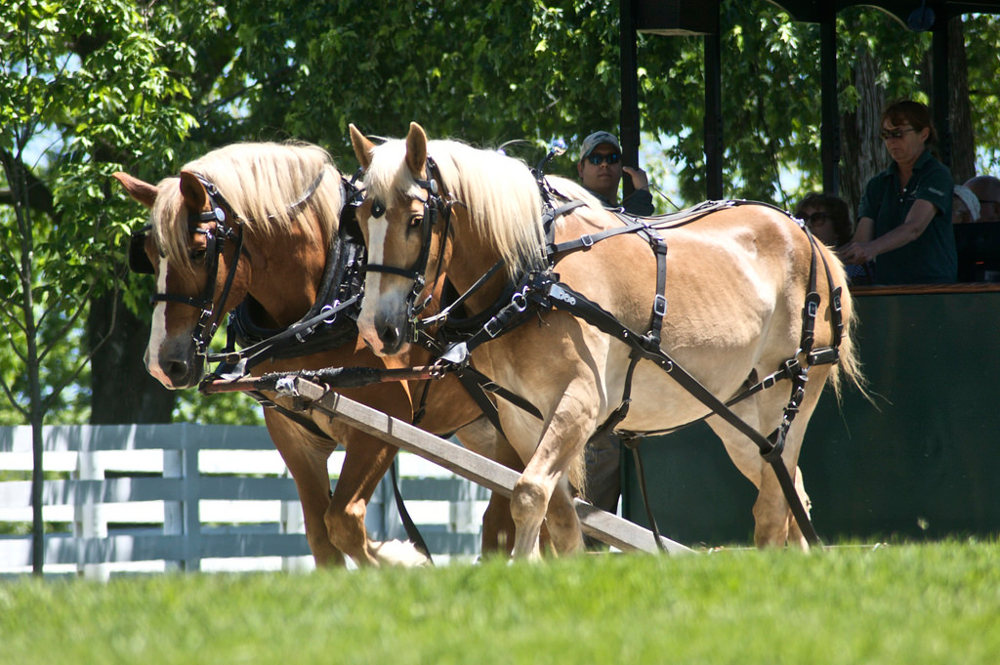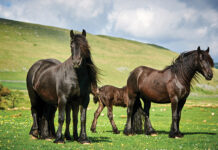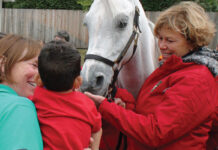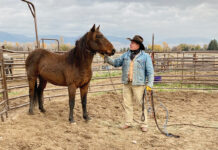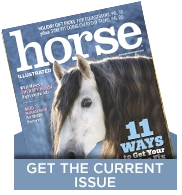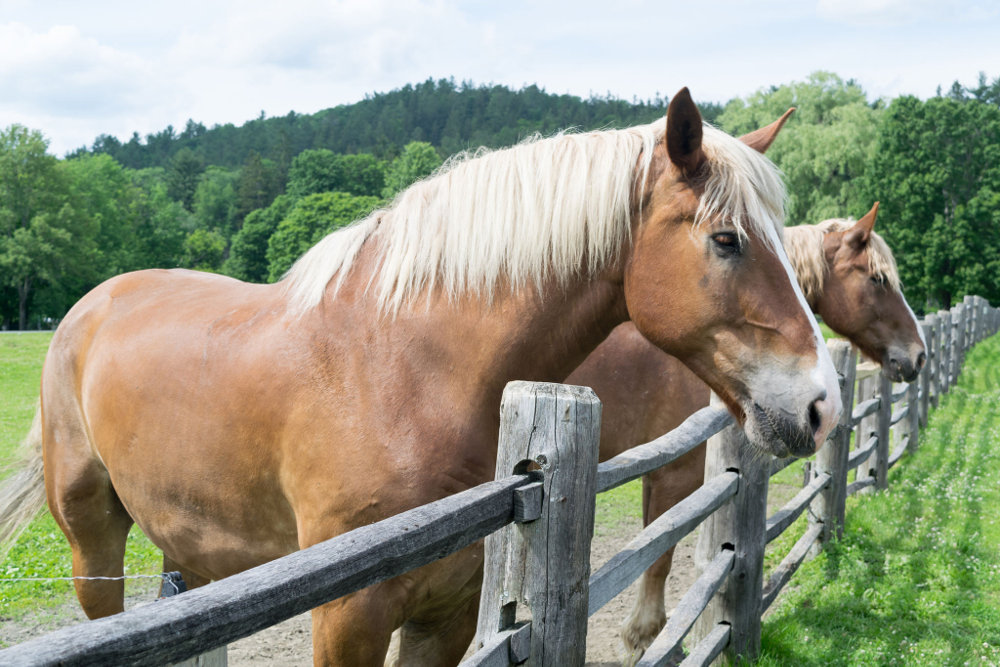
Bred for farm work and heavy carriage deliveries, Belgium’s native Belgian draft horse is more commonly seen in show and recreational pursuits today: weight-pulling competitions, in-hand performance or carriage driving. However, some agriculturalists are returning to horses like the Belgian as a more ecologically friendly method of cultivation.
American Story
The United States imported the first Belgians in the 1860s, and the Association of Importers and Breeders of Belgian Draft Horses was established in 1887 to promote the breed. The Belgian Draft Horse Corporation of America grew from this organization in 1937 and remains the registry for the breed today.
In 1903, the Belgian’s powerful look and skills garnered much positive attention at the St. Louis World’s Fair and International Livestock Exposition in Chicago. Despite declines in numbers during World War II and the switch to mechanized farm equipment, the Belgian survived to become one of most popular draft breeds. Besides their strength, Belgians are loved for being docile, hard-working and hardy.
Fast Facts
Height: 16 to 18 hands.
Weight: Belgians can weigh more than 1 ton (2,000 pounds).
Color: Acceptable colors include blonde, sorrel and roan with light points, and chestnut. White manes and tails, as well as a white stripe on the face, are preferred.
Overall appearance: Belgians have well-defined musculature, a level back, large hooves and a deep girth.
To learn more about the Belgian, visit the Belgian Draft Horse Corporation of America at www.belgiancorp.com.
KIM KLIMEK is a freelance writer based in Kentucky.
This article originally appeared in the December 2017 issue of Horse Illustrated magazine. Click here to subscribe!

